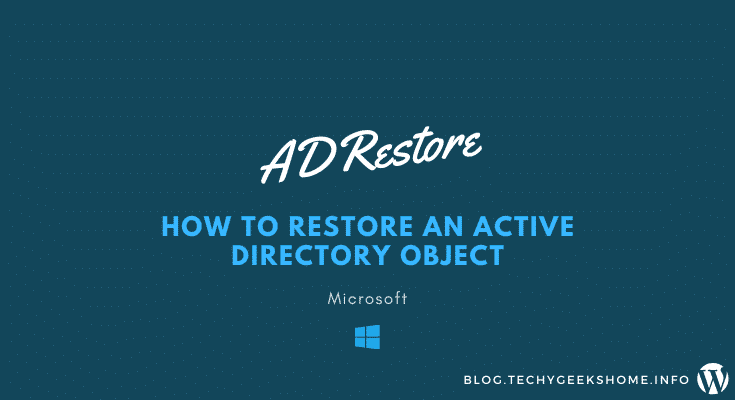
If a site controller fails, but hasn't been backed up, You can not make use of the backup of A further area controller to restore the unsuccessful area controller.
This example shows how you can set this parameter to an ADObject object instance named "ADObjectInstance".
The Active Directory Recycle Bin look for filter, permit us to “slender†look for result that exhibited, by defining some specific parameters like – Division, development date and so on.
An object inside the deleted object section could be recovered to the precise condition it absolutely was in at the time of deletion using the exact same process that’s used to reanimate a tombstone.
Restores the ADObject when placing the 'msDS-LastKnownRDN' attribute in the deleted object to -NewName parameter and location the 'lastKnownRDN' on the -TargetPath parameter.
When Active Directory objects are deleted, These are positioned in the Deleted Objects container or also known as the Advertisement recycle bin. By default, this container is not displayed to an administrator and it should be enabled manually both employing a script or maybe the LDP.exe utility. Pursuing the enabling of your active directory recycle bin, there are several native methods to restore deleted accounts in a Home windows server which include LDP.
Although invisible to other procedures, a tombstone is visible into the Active Directory replication method. To ensure the deletion performed on many of the DCs that host the object deleted, Active Directory replicates the tombstone to the opposite DCs. Thus the tombstone is utilised to duplicate the deletion throughout the Active Directory setting.
Indigenous solutions do not permit you to restore deleted objects that have entered “Recycled†or “Physically deleted†state.
As the advent of cloud technological innovation has designed it much easier to launch shadow IT, CIOs needs to be significantly diligent to establish and ...
An authoritative restore can be an Procedure by which the info that has been restored usually takes precedence in excess of the data that exists on other domain controllers within the area.
It can be crucial in your case to be familiar with the distinction between transferring and seizing Versatile One Grasp Functions roles. Transferring an FSMO job entails manually assigning that role to another area controller. You may only transfer a task although the server that is now assigned the role is offered and in a nutritious state. By way of example, you would website transfer the FSMO roles to a different domain controller For anyone who is organizing on gracefully demoting the area controller to member server position, or In case you are scheduling on taking the domain controller offline for an prolonged period of time.
A non-authoritative restoration is often a approach by which the domain controller is restored, and then the Active Directory objects are brought updated by replicating the most up-to-date Variation of those objects from other area controllers in the area.
You could then established the Credential parameter to the PSCredential object The following case in point reveals how to develop credentials.
This is how It can save you oneself from the burden of restoring AD objects to any in their previous states without needing to write elaborate PowerShell scripts: read more use RecoveryManager Moreover.